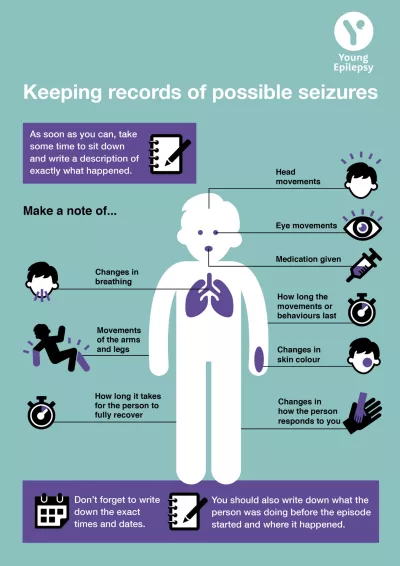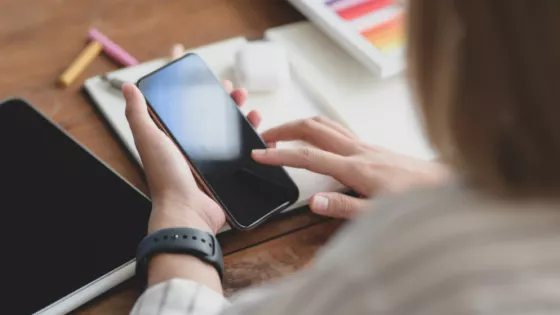It’s important to keep accurate seizure records, every time a young person has a seizure.
This page covers what you need to record and how, with a visual guide to witnessing seizures and a form for recording the details, which you can download.
Why is it important to record details of a seizure?
Accurate information about what happened before, during and after a young person’s seizure is important for other school staff and for future incidents in the school. It’s also valuable information that should be shared with parents, carers and the healthcare professionals involved in planning the young person’s care.
This information will assist in making a correct epilepsy diagnosis, recognising patterns and changes in the young person’s condition, and informing the ongoing management and treatment of their condition.
How to record details of a seizure
Where possible, school staff involved in the care of a young person with epilepsy should record their observations every time that young person has a seizure.
Any changes in their seizures or treatment plan should be recorded on the young person’s Individual Healthcare Plan.
Witnessing a seizure can be stressful and it’s easy to forget some of the details. It’s best to describe what you saw rather than trying to categorise it and risk missing out important information. The visual guide below tells you what you should be looking for when witnessing a seizure. If possible, a video is the ideal way to capture the seizure.
To familiarise yourself with what you need to observe when witnessing a seizure, and help you keep accurate records, you can download a PDF of this guide below:

Download the ‘Keeping records of possible seizures’ visual guide.
Then, write down a detailed description of what happened before, during and after the seizure, as soon as possible.


